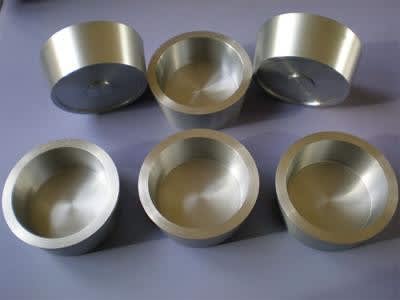Introduction:
Fine chemical synthesis demands precision, efficiency, and environmental consciousness. In this intricate realm, Palladium on Carbon (Pd/C) emerges as a catalytic marvel, playing a pivotal role in crafting high-value compounds. This blog delves into the intricate world of fine chemical synthesis, highlighting how Pd/C catalysis stands as a cornerstone in creating complex molecules with unparalleled efficiency and versatility.

Understanding Palladium on Carbon:
Palladium on Carbon, often abbreviated as Pd/C, represents a heterogeneous catalyst where palladium nanoparticles are dispersed on a carbon support. This unique combination of elements grants Pd/C exceptional catalytic properties, making it a catalyst of choice for various fine chemical synthesis processes.
Hydrogenation Excellence:
Pd/C's ability to facilitate hydrogenation reactions is unparalleled. It serves as a catalyst for the addition of hydrogen to unsaturated organic compounds, enabling precise control over the reduction process. This is particularly crucial in fine chemical synthesis where selective hydrogenation is often required to create intricate molecular structures.
Cross-Coupling Capabilities:
Pd/C is a linchpin in cross-coupling reactions, notably the Suzuki-Miyaura and Stille couplings. These processes involve the coupling of different organic compounds under palladium catalysis, leading to the creation of complex molecules with diverse applications in pharmaceuticals, agrochemicals, and materials science.
C-C Bond Formation:
The versatility of Pd/C shines in its ability to catalyze carbon-carbon (C-C) bond formation. This capability is essential in fine chemical synthesis, as the formation of C-C bonds is a fundamental step in constructing complex molecular frameworks. Pd/C's efficiency in this regard makes it an invaluable tool for chemists working on intricate synthesis pathways.
Functional Group Tolerance:
Pd/C exhibits remarkable tolerance to various functional groups, allowing chemists to work with a diverse range of substrates. This feature is a game-changer in fine chemical synthesis, where complex molecules often contain multiple functional groups. Pd/C's compatibility contributes to the streamlined synthesis of intricate compounds.
Sustainable Synthesis:
In an era of increasing emphasis on sustainability, Pd/C catalysis stands out for its eco-friendly attributes. The catalyst's efficiency minimizes the need for harsh reaction conditions and excess reagents, reducing waste and promoting greener synthesis practices.
Conclusion:
Palladium on Carbon's role in fine chemical synthesis is nothing short of revolutionary. Its prowess in hydrogenation, cross-coupling, C-C bond formation, functional group tolerance, and sustainability sets the stage for a new era in the creation of high-value compounds. As the field of fine chemical synthesis continues to evolve, Pd/C catalysis remains a beacon of innovation, offering chemists the tools to navigate the complexities of molecular design with precision and efficiency.
Fine chemical synthesis demands precision, efficiency, and environmental consciousness. In this intricate realm, Palladium on Carbon (Pd/C) emerges as a catalytic marvel, playing a pivotal role in crafting high-value compounds. This blog delves into the intricate world of fine chemical synthesis, highlighting how Pd/C catalysis stands as a cornerstone in creating complex molecules with unparalleled efficiency and versatility.

Understanding Palladium on Carbon:
Palladium on Carbon, often abbreviated as Pd/C, represents a heterogeneous catalyst where palladium nanoparticles are dispersed on a carbon support. This unique combination of elements grants Pd/C exceptional catalytic properties, making it a catalyst of choice for various fine chemical synthesis processes.
Hydrogenation Excellence:
Pd/C's ability to facilitate hydrogenation reactions is unparalleled. It serves as a catalyst for the addition of hydrogen to unsaturated organic compounds, enabling precise control over the reduction process. This is particularly crucial in fine chemical synthesis where selective hydrogenation is often required to create intricate molecular structures.
Cross-Coupling Capabilities:
Pd/C is a linchpin in cross-coupling reactions, notably the Suzuki-Miyaura and Stille couplings. These processes involve the coupling of different organic compounds under palladium catalysis, leading to the creation of complex molecules with diverse applications in pharmaceuticals, agrochemicals, and materials science.
C-C Bond Formation:
The versatility of Pd/C shines in its ability to catalyze carbon-carbon (C-C) bond formation. This capability is essential in fine chemical synthesis, as the formation of C-C bonds is a fundamental step in constructing complex molecular frameworks. Pd/C's efficiency in this regard makes it an invaluable tool for chemists working on intricate synthesis pathways.
Functional Group Tolerance:
Pd/C exhibits remarkable tolerance to various functional groups, allowing chemists to work with a diverse range of substrates. This feature is a game-changer in fine chemical synthesis, where complex molecules often contain multiple functional groups. Pd/C's compatibility contributes to the streamlined synthesis of intricate compounds.
Sustainable Synthesis:
In an era of increasing emphasis on sustainability, Pd/C catalysis stands out for its eco-friendly attributes. The catalyst's efficiency minimizes the need for harsh reaction conditions and excess reagents, reducing waste and promoting greener synthesis practices.
Conclusion:
Palladium on Carbon's role in fine chemical synthesis is nothing short of revolutionary. Its prowess in hydrogenation, cross-coupling, C-C bond formation, functional group tolerance, and sustainability sets the stage for a new era in the creation of high-value compounds. As the field of fine chemical synthesis continues to evolve, Pd/C catalysis remains a beacon of innovation, offering chemists the tools to navigate the complexities of molecular design with precision and efficiency.













